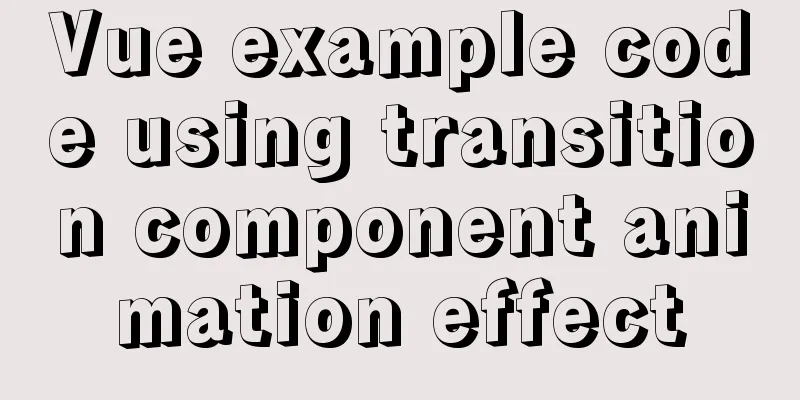JavaScript array deduplication solution

|
There are several other ways to process arrays~
Method 1: set: It is not a data type, but a data structure; members are unique
let arr = [12,1,12,3,1,88,66,9,66];
function unique(ary) {
let s = new Set(ary);
// Array.from: Convert the set data structure into a real array;
return Array.from(s)
}
unique(arr);
Method 2: Object attribute names cannot be repeated
let arr = [12,1,12,3,1,88,66,9,66];
function unique(ary) {
let obj = {};
for(let i=0;i<ary.length;i++){
let cur = ary[i];
if (obj[cur]) {
//ary.splice(i,1);// causes the array to collapse ary[i]=ary[ary.length-1];
ary.length--; // delete the last item i--;
continue;
}
obj[cur]=cur; // Add a key-value pair to obj; the attribute name and attribute value are the same}
}
unique(arr);
Method 3: indexOf
let arr = [12,1,12,3,1,88,66,9,66];
function unique(ary) {
let newAry = [];
for(let i=0;i<ary.length;i++){
let cur = ary[i];
if (newAry.indexOf(cur)===-1){
newAry.push(cur);
}
}
return newAry;
}
unique(arr)
Method 4: sort
let arr = [12,1,12,3,1,88,66,9,66];
function unique(ary) {
let a = ary.sort(function (a,b) {
return ab;
});
for(let i=0;i<a.length;i++){
if(a[i]===a[i+1]){
a.splice(i+1,1);
i--;
}
}
return a;
}
unique(arr)
Method 5: includes: includes; if the array contains that item, returns true; if it does not contain it, returns false;
let arr = [12,1,12,3,1,88,66,9,66];
function unique(ary) {
let newAry = [];
let len = ary.length;
for(let i=0;i<len;i++){
let cur = ary[i];
if (!newAry.includes(cur)){
newAry.push(cur);
}
}
return newAry;
}
console.log(unique(arr));
Method 6: hasOwnProperty: Checks whether the property name is a private property of the object; returns a Boolean value;
let arr = [12,1,12,3,1,88,66,9,66];
function unique(ary) {
let obj = {};
return ary.filter(function (item,index,a) {
// item: each member of the array // index: the index corresponding to the member // a: the entire array // hasOwnProperty is used to check whether the property has appeared;
return obj.hasOwnProperty(typeof item+item)?false:obj[typeof item+item]=true;
if (obj.hasOwnProperty(typeof item+item)){
return false
}else{
obj[typeof item+item]=true;
return true;
}
})
}
console.log(unique(arr))
Method 7: filter+indexOf
let arr = [12,1,12,3,1,88,66,9,66];
function unique(ary) {
return ary.filter(function (item,index,a) {
return ary.indexOf(item)===index;
})
}
console.log(unique(arr));
Method 8: splice
let arr = [12,1,12,3,1,88,66,9,66];
function unique(ary) {
for(let i=0;i<ary.length;i++){
for(j=i+1;j<ary.length;j++){
if(ary[i]===ary[j]){
ary.splice(j,1);
j--;
}
}
}
return ary;
}
unique(arr);
Method 9: Recursion
let arr = [12,1,12,3,1,88,66,9,66];
function unique(ary) {
let len = ary.length;
ary = ary.sort(function (a,b) {
return ab;
});
function loop(index) {
if(index>=1){
if(ary[index]===ary[index-1]){
ary.splice(index,1);
}
loop(index-1)
}
}
loop(len-1);
return ary;
}
console.log(unique(arr));
Method 10: Map: Utilizes the value storage feature of Map data structure;
let arr = [12,1,12,3,1,88,66,9,66];
function unique(ary) {
let newAry = [];
let map = new Map();
for(let i=0;i<ary.length;i++){
if (!map.has(ary[i])){
map.set(ary[i],true);
newAry.push(ary[i]);
}
}
}
unique(arr);
Method 11: reduce
let arr = [12,1,12,3,1,88,66,9,66];
function unique(ary) {
// reduce: The first one is a function, and the second parameter will be passed to prev of the first callback;
return ary.reduce((prev,next)=>{
//The return value of this function is prev for the next execution;
return prev.includes(next)?prev:[...prev,next];
},[])
}
console.log(unique(arr));
Method 12: Similar to method 1, using the rest operator...
let arr = [12,1,12,3,1,88,66,9,66];
let a = [...new Set(arr)];
console.log(a);
This is the end of this article about JS array solutions. For more relevant JS array deduplication content, please search for previous articles on 123WORDPRESS.COM or continue to browse the following related articles. I hope everyone will support 123WORDPRESS.COM in the future! You may also be interested in:
|
<<: A brief analysis of MySQL parallel replication
>>: UDP connection object principle analysis and usage examples
Recommend
Tutorial on installing and using virtualenv in Deepin
virtualenv is a tool for creating isolated Python...
Tutorial on configuring and changing passwords for the MySQL free installation version
Step 1: Configure environment variables (my decom...
User experience analysis of facebook dating website design
<br />Related article: Analysis of Facebook&...
js dynamically generates tables (node operations)
This article example shares the specific code of ...
CSS3 solution to the problem of freezing on mobile devices (animation performance optimization)
1. Use CSS, jQuery, and Canvas to create animatio...
Solve the problem that ElementUI custom CSS style does not take effect
For example, there is an input box <el-input r...
How to analyze SQL execution plan in MySQL through EXPLAIN
Preface In MySQL, we can use the EXPLAIN command ...
Method of implementing recursive components based on Vue technology
describe This article introduces a method to impl...
An article tells you how to write a Vue plugin
Table of contents What is a plugin Writing plugin...
vue+springboot realizes login function
This article example shares the specific code of ...
How to reset MySQL root password
Table of contents 1. Forgot the root password and...
How to implement call, apply and bind in native js
1. Implement call step: Set the function as a pro...
Mybatis mysql delete in operation can only delete the first data method
Bugs As shown in the figure, I started to copy th...
The difference between br and br/ in HTML
answer from stackflow: Simply <br> is suffic...
Advanced Usage Examples of mv Command in Linux
Preface The mv command is the abbreviation of mov...









